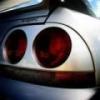Announcements
-
Similar Content
-
Latest Posts
-
FWIW, looks like there is one here: https://auctions.yahoo.co.jp/jp/auction/g1199091280 Jesse Streeter could help if that is what you are after
-
Interesting. I still think they are the result of impact damage somewhere along the line, but clearly lightning has stuck thrice! I've still got the original ones on my race car and they have had some hard work.




Recommended Posts
Create an account or sign in to comment
You need to be a member in order to leave a comment
Create an account
Sign up for a new account in our community. It's easy!
Register a new accountSign in
Already have an account? Sign in here.
Sign In Now